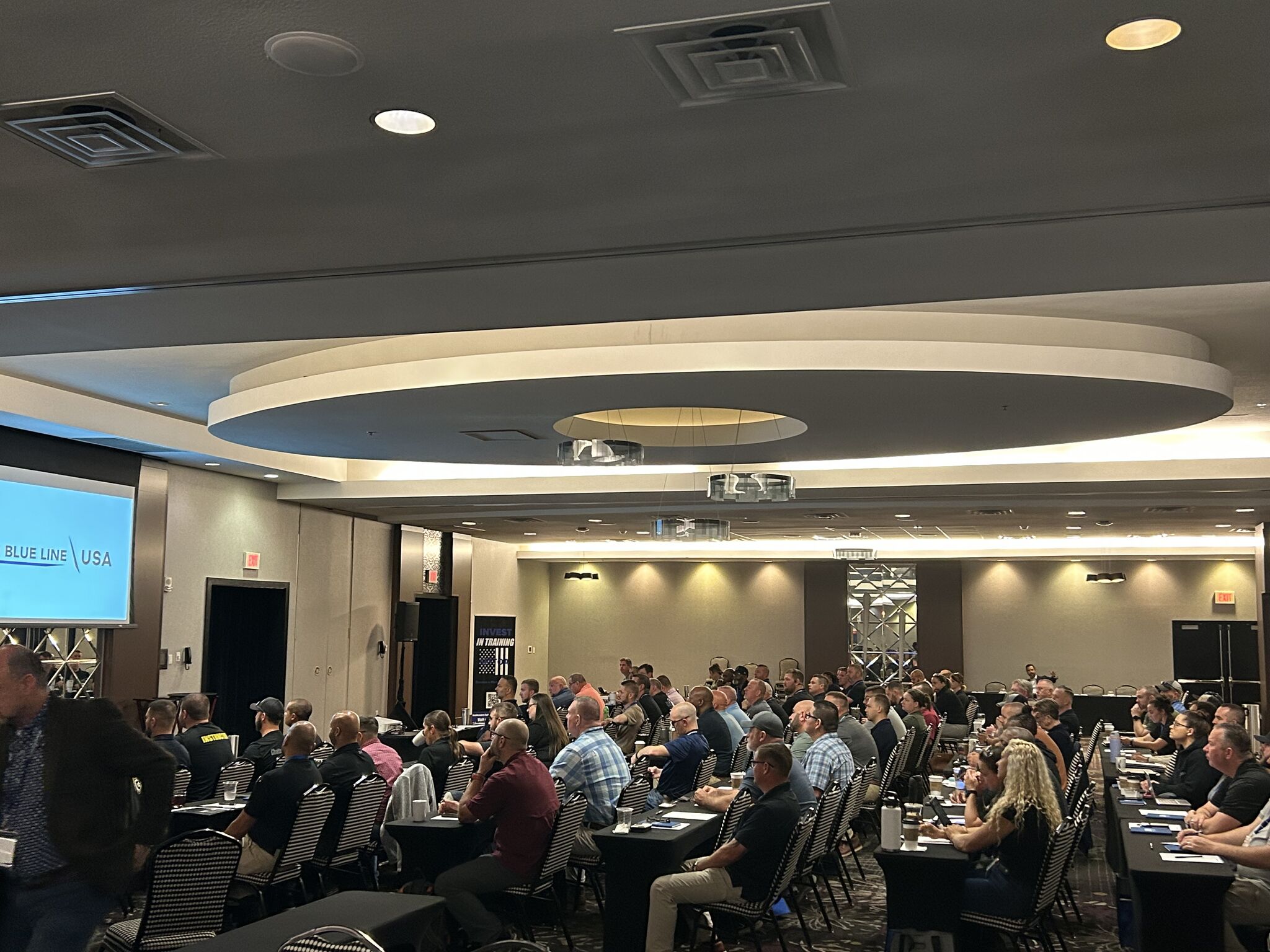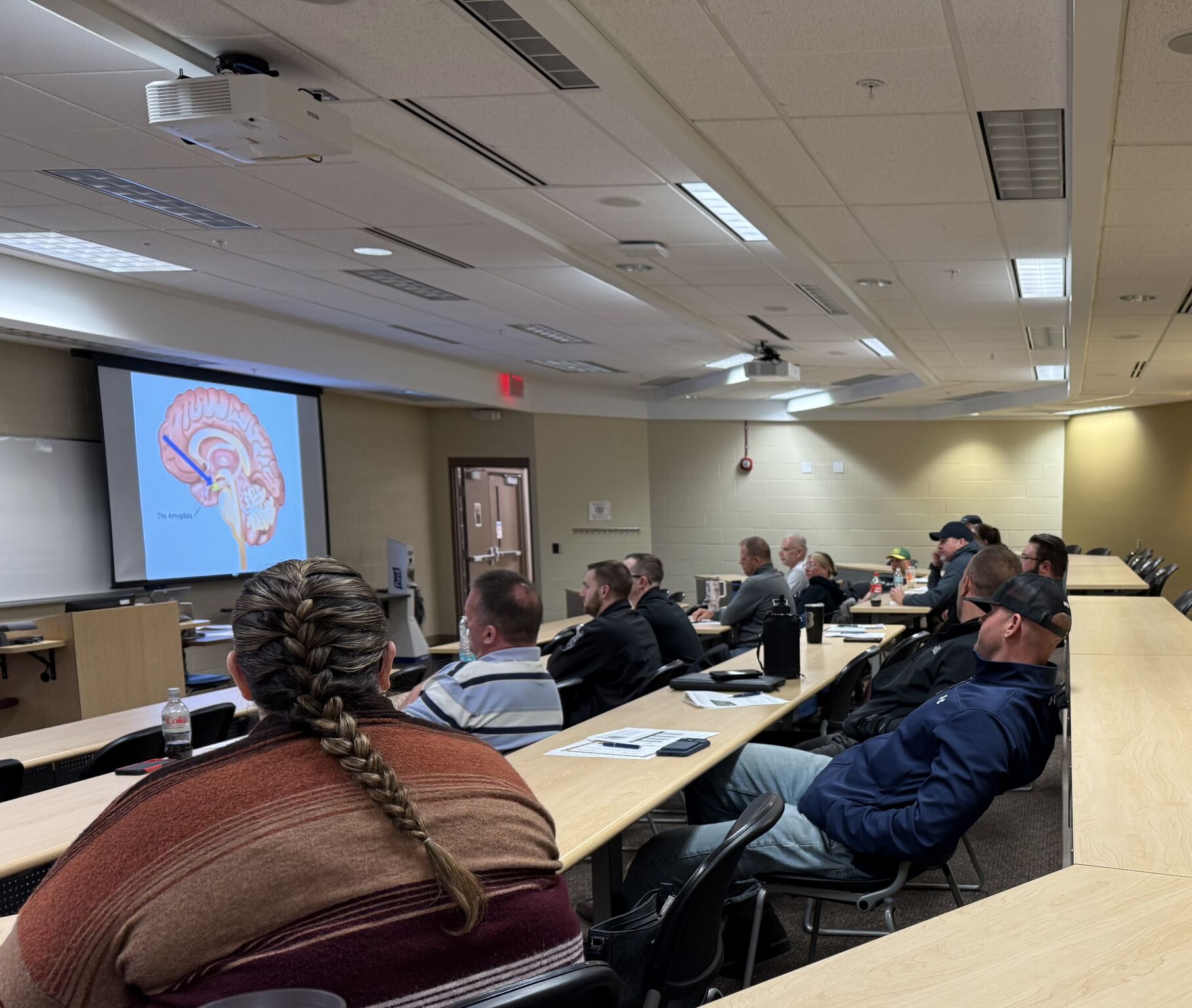Discover the habits and mindset that separate good reactions from great leadership. Learn how intentional police leadership development transforms high-stress encounters into opportunities to serve with confidence, clarity, and care.
Leadership Revealed Under Pressure
Every officer faces moments that test more than skill—they test leadership. A tense scene, a volatile subject, or a split-second decision can define the outcome. In these moments, great officers don’t just react—they lead.
At Command Presence, we’ve trained more than 75,000 public safety professionals across North America. Our instructors—seasoned leaders from patrol to command—have seen firsthand that leadership isn’t defined by rank; it’s revealed under pressure. The following lessons highlight what great officers do differently when stress peaks.
1. Leadership Starts Before the Call
When stress arrives, training takes over. But leadership begins long before that. Great officers mentally rehearse their response before the radio crackles. They practice calm breathing, visualize outcomes, and build confidence through consistent, realistic training.
This is the foundation of effective officer safety training: anticipating stress instead of being consumed by it. Preparation creates clarity. Resilience isn’t an instinct—it’s a discipline that must be built deliberately, long before the critical moment arrives.
2. Control What You Can: The Leadership Mindset Under Pressure
In the field, not everything can be controlled—but you can. Great officers maintain composure through breathing, tone, and body language. They communicate clearly when others panic. Their calm becomes the team’s anchor.
This ability to think while others react is the essence of leadership under pressure. It’s also a learnable skill—one built through deliberate practice in assessing risk, slowing the moment, and making clear decisions even when adrenaline surges.
3. Communication Is the First De-Escalation Tool
High-stress encounters are as much about communication as they are about control. Great officers use their voice as a tool, not a weapon. They lower the temperature through calm authority, empathy, and intentional word choice.
Years of field experience show that tone and timing often determine outcomes. Officers who communicate with presence project confidence without escalation—earning trust while maintaining safety.
4. After the Call: Reflect, Don’t Just React
Leadership continues after the scene clears. Great officers debrief honestly—with themselves and their teams. They ask: What went well? What needs work? How did I lead myself and others?
Reflection builds resilience and fuels growth. It’s how police leadership development becomes part of everyday practice, not an annual checkbox. By integrating lessons from each encounter, officers strengthen judgment, communication, and confidence for the next challenge.
The real test of leadership isn’t reflection—it’s applying those insights in the field. When officers turn awareness into action, they elevate the performance and morale of entire teams.
5. Practical Takeaways for Every Officer
Great officers lead differently because they think differently. Here’s what you can start doing right now to lead under stress:
- Train your mindset before the call. Preparation turns chaos into clarity.
- Control your breathing and tone. Calm leadership controls the scene.
- Debrief every encounter. Growth happens after reflection.
- Seek leadership training early. Don’t wait for a promotion to lead.
- Lead by example. Command presence isn’t rank—it’s behavior.
Conclusion: Leadership Under Stress Is Built, Not Born
Stress is unavoidable in law enforcement—but panic is optional. What separates great officers from good ones is preparation, presence, and purpose. Through structured police leadership development, every officer can strengthen the habits that create safer encounters and stronger teams.
When leadership meets composure, even the toughest moments become opportunities to serve the public with integrity and care.
Explore ways to strengthen your leadership under pressure — View Upcoming Trainings
Recommended Resources
Written by a Command Presence Instructor with 25+ years of law enforcement leadership experience. Command Presence Training has empowered more than 75,000 public safety professionals across North America.






